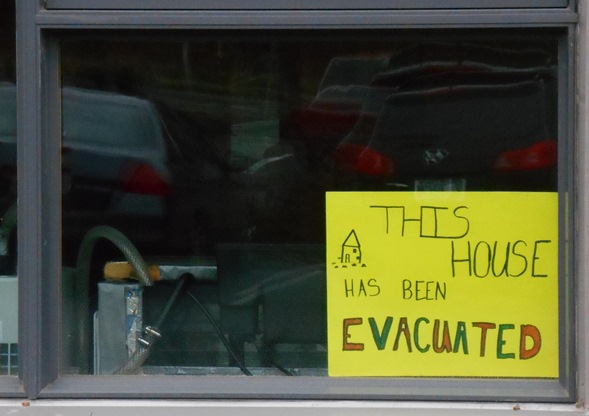
A team of eight elementary school girls who are on the NEON SPARKS LEGO robotics team in Oregon sent us an idea they have been working on. The photo above is a very rough draft of a sign that would be much more polished in the final version. Below is the text of an email they sent us:
****
“This year, we have spent the past 4 months researching Wildfires, wildland urban interface (WUI) areas, and defensible space. As a result of their extensive research, we have developed a rather simple, easy to use system for people living in WUI areas to signal to other people that they have evacuated their homes in the event of a mandatory evacuation.
Basically, we have developed a sign which people can place in the front window, or other areas of their home to signal to firefighters or other law enforcement people that a home is cleared of all people and pets. Through our research, we found similar signs available for homeowners living in areas prone to tsunami, tornados, floods, and hurricane evacuations. But, we could not find any such signs available for homeowners or rural homeowner associations in WUI areas prone to wildfires – especially here in the Pacific Northwest. Our prototype sign would be made of a fire-resistant material, brightly colored, and very inexpensive to manufacture and distribute. We feel this real-world, simple, and easy to use sign could have the potential to free-up valuable firefighter’s time, and save lives too.
Thank you for any positive feedback you would like to share with us.
The Neon Sparks LEGO Robotics Team in Oregon”
****
From Bill:
What do you think, readers of Wildfire Today? Have you seen anything like this used on wildfires or any other natural disasters in your area?
I have to admit, I don’t really know what these LEGO competitions are all about. When I was a kid LEGOs had not yet become popular.



